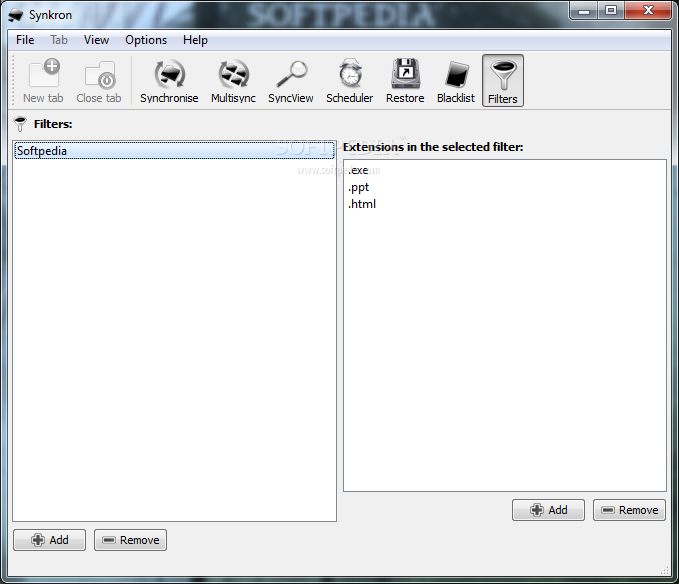
You can also make an explicit request for maintainers.File synchronization ensures that two or more data storage devices, computers, or programs have the same information at a given time. Someone may choose to fork your project or volunteer to step in as a maintainer or owner, allowing your project to keep going. If you have run out of energy or time for your project, put a note at the top of the README saying that development has slowed down or stopped completely. Licenseįor open source projects, say how it is licensed. Show your appreciation to those who have contributed to the project. Having instructions for running tests is especially helpful if it requires external setup, such as starting a Selenium server for testing in a browser.
SYNKRON TUTORIAL CODE
These steps help to ensure high code quality and reduce the likelihood that the changes inadvertently break something. You can also document commands to lint the code or run tests. These instructions could also be useful to your future self. Perhaps there is a script that they should run or some environment variables that they need to set.
SYNKRON TUTORIAL HOW TO
State if you are open to contributions and what your requirements are for accepting them.įor people who want to make changes to your project, it's helpful to have some documentation on how to get started. If you have ideas for releases in the future, it is a good idea to list them in the README. It can be any combination of an issue tracker, a chat room, an email address, etc. Tell people where they can go to for help. It's helpful to have inline the smallest example of usage that you can demonstrate, while providing links to more sophisticated examples if they are too long to reasonably include in the README. Use examples liberally, and show the expected output if you can. If it only runs in a specific context like a particular programming language version or operating system or has dependencies that have to be installed manually, also add a Requirements subsection. Listing specific steps helps remove ambiguity and gets people to using your project as quickly as possible. However, consider the possibility that whoever is reading your README is a novice and would like more guidance. Within a particular ecosystem, there may be a common way of installing things, such as using Yarn, NuGet, or Homebrew. Tools like ttygif can help, but check out Asciinema for a more sophisticated method. Visualsĭepending on what you are making, it can be a good idea to include screenshots or even a video (you'll frequently see GIFs rather than actual videos). Many services also have instructions for adding a badge. You can use Shields to add some to your README. On some READMEs, you may see small images that convey metadata, such as whether or not all the tests are passing for the project. If there are alternatives to your project, this is a good place to list differentiating factors. A list of Features or a Background subsection can also be added here. Provide context and add a link to any reference visitors might be unfamiliar with.

Let people know what your project can do specifically. NameĬhoose a self-explaining name for your project. If you think your README is too long, consider utilizing another form of documentation rather than cutting out information.

Also keep in mind that while a README can be too long and detailed, too long is better than too short. The sections used in the template are suggestions for most open source projects. Suggestions for a good READMEĮvery project is different, so consider which of these sections apply to yours.
SYNKRON TUTORIAL FREE
When you're ready to make this README your own, just edit this file and use the handy template below (or feel free to structure it however you want - this is just a starting point!). Use pull-based deployments for improved Kubernetes management.Deploy to Kubernetes, Amazon EC2, or Amazon ECS using Auto Deploy.Analyze your code for known vulnerabilities with Static Application Security Testing(SAST).Use the built-in continuous integration in GitLab. Automatically merge when pipeline succeeds.Automatically close issues from merge requests.


 0 kommentar(er)
0 kommentar(er)
